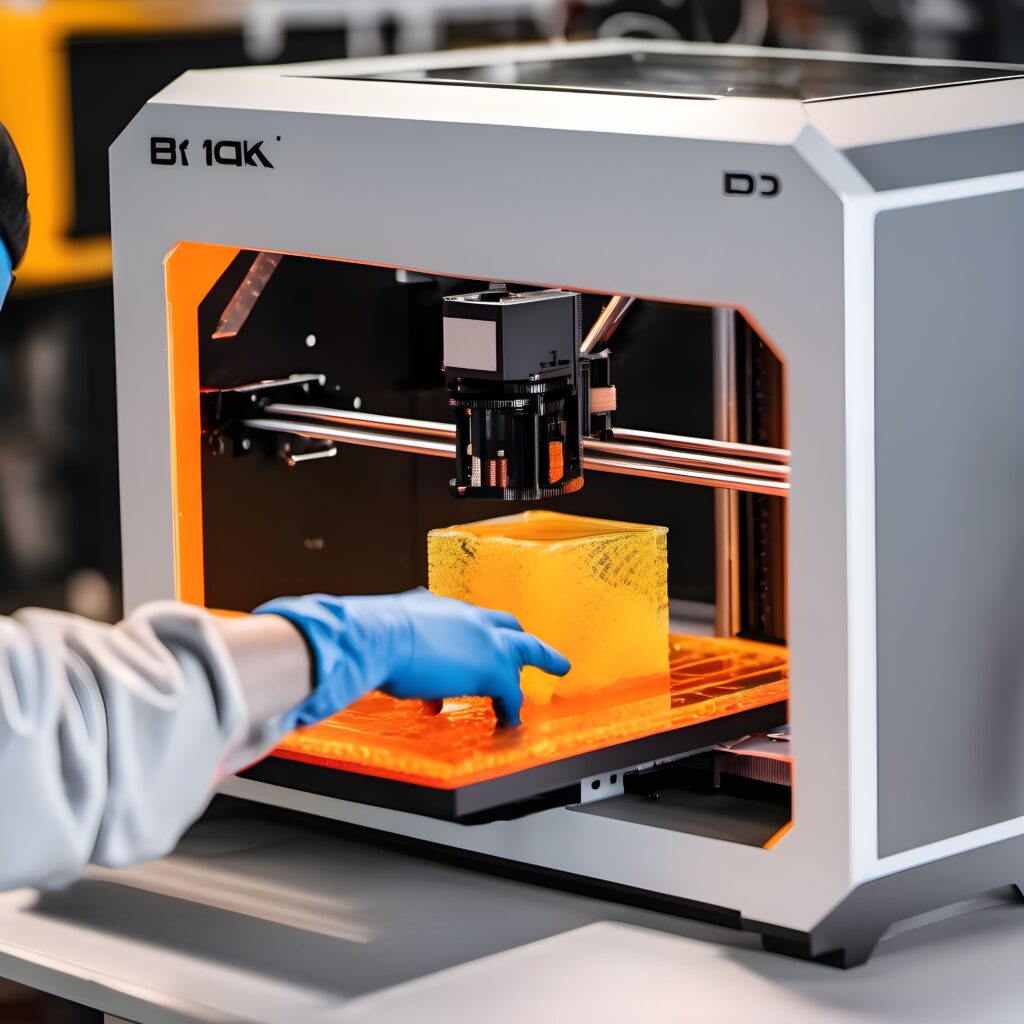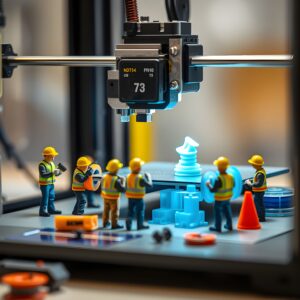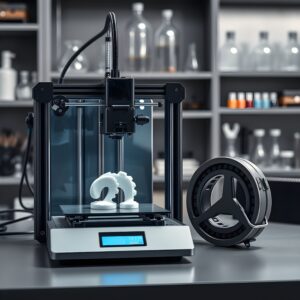Applications of 3D Printing: Transforming Industries in 2025

3D printing, also known as additive manufacturing, has rapidly evolved over the past decade and is now a crucial technology in multiple industries. By enabling the creation of complex structures with high precision, 3D printing has transformed traditional manufacturing processes. As of early 2025, advancements in material science, printing techniques, and automation have further expanded its applications across diverse sectors, including healthcare, aerospace, automotive, construction, consumer goods, and education.
This article explores how 3D printing is revolutionizing these industries, providing a detailed look at recent developments and their impact. From life-saving medical applications to sustainable construction methods, the technology is reshaping how products and structures are designed, manufactured, and utilized.
Healthcare: The Role of 3D Printing in Medical Innovation
The healthcare industry has been one of the primary beneficiaries of 3D printing technology. With its ability to create custom medical devices, implants, and even human tissues, the impact on patient care has been profound.
Prosthetics and Implants
One of the most significant applications of 3D printing in healthcare is the production of customized prosthetics and implants. Traditionally, creating a prosthetic limb requires extensive time and resources, and it may not provide an ideal fit for the patient. However, with 3D printing, prosthetics can be designed specifically to match the patient’s anatomy, enhancing both comfort and functionality. This personalized approach improves patient outcomes while reducing costs.
Bioprinting and Tissue Engineering
Recent advancements in bioprinting have opened new doors in regenerative medicine. In July 2024, researchers developed artificial blood vessels using 3D-printing technology. These vessels, made from a water-based gel coated in biodegradable polyester molecules, demonstrated strength and durability comparable to natural arteries. This breakthrough holds promise for future applications in vascular surgeries and organ regeneration.
Between January 31 and February 7, 2025, a notable development in bioprinting included the successful implantation of a 3D-printed tracheal splint in a pediatric patient suffering from severe tracheobronchomalacia. Unlike traditional implants, the 3D-printed splint is biodegradable and designed to dissolve over time, eliminating the need for additional surgeries.
3D-Printed Surgical Models and Medical Training
Surgeons now use 3D-printed anatomical models for pre-surgical planning, allowing them to practice complex procedures before operating on patients. These models, created from medical imaging data, provide a realistic representation of organs and tissues. This approach improves surgical precision and reduces the risk of complications during procedures.
Aerospace: Redefining Aircraft and Space Exploration
The aerospace sector has widely adopted 3D printing for its ability to produce lightweight yet durable components. The demand for fuel-efficient and high-performance aircraft has led manufacturers to explore innovative solutions, and additive manufacturing has become a game-changer.
Lightweight Component Manufacturing
3D printing enables aerospace engineers to design and produce components that are both lightweight and structurally optimized. By reducing the weight of aircraft and spacecraft parts, manufacturers can significantly enhance fuel efficiency and overall performance.
Companies like General Electric (GE) and Boeing have integrated 3D-printed components into their aircraft, reducing production costs and minimizing material waste. In early 2024, a leading aerospace firm successfully tested a fully 3D-printed rocket engine, proving the feasibility of using additive manufacturing for critical space exploration components.
Rapid Prototyping and Customization
Another major advantage of 3D printing in aerospace is the ability to rapidly prototype and manufacture customized components. Traditional manufacturing methods often require months of development, but with 3D printing, engineers can quickly produce and test different designs before finalizing a model.
Between January and February 2025, advancements in aerospace 3D printing have focused on the development of next-generation heat-resistant materials for space travel. NASA has been testing 3D-printed parts for spacecraft, designed to withstand extreme temperatures encountered during re-entry into Earth’s atmosphere.
Automotive: The Future of Car Manufacturing
The automotive industry has embraced 3D printing for both prototyping and the production of custom vehicle components. The ability to create complex designs with high precision has accelerated innovation in vehicle development.
Prototyping and Custom Parts
Automakers rely on 3D printing for rapid prototyping, allowing them to test various components before mass production. By using 3D-printed models, manufacturers can identify design flaws early, saving both time and money.
One of the most notable examples is the Czinger 21C hypercar, which features 3D-printed components to enhance aerodynamics and reduce weight. In August 2024, the Czinger 21C set a lap record at Laguna Seca Raceway, showcasing the performance benefits of 3D-printed automotive parts.
Electric Vehicles and Sustainable Manufacturing
With the global push toward sustainability, electric vehicle (EV) manufacturers are leveraging 3D printing to develop eco-friendly car components. Recyclable materials and bio-based polymers are now being integrated into 3D-printed car parts, reducing the carbon footprint of vehicle production.
In February 2025, a leading EV manufacturer unveiled a new model with a 3D-printed chassis, designed to enhance structural integrity while minimizing material usage. This approach aligns with the automotive industry’s efforts to adopt more sustainable manufacturing practices.
Construction: Revolutionizing the Building Industry
3D printing has made significant inroads into the construction sector, offering new possibilities for creating sustainable, cost-effective buildings.
3D-Printed Buildings and Infrastructure
One of the most promising applications of 3D printing in construction is the ability to create entire structures using automated 3D printers. In Melbourne, Australia, the first multistory 3D-printed house in the Southern Hemisphere was completed in February 2025. This 350-square-meter residence was built in just five weeks, demonstrating the efficiency of 3D printing in construction.
Similarly, in January 2025, Sydney developers initiated a project using AI-powered 3D printers to construct affordable duplexes. This project aims to address housing shortages by reducing construction costs and increasing building efficiency.
Sustainability and Waste Reduction
Traditional construction methods generate significant waste, but 3D printing offers a sustainable alternative. By using locally sourced materials and precise layering techniques, additive manufacturing minimizes excess material usage.
Between January and February 2025, researchers have been experimenting with eco-friendly 3D-printed concrete blends that incorporate recycled industrial waste. These materials not only reduce environmental impact but also enhance the durability of 3D-printed structures.
Consumer Goods: Customization and On-Demand Manufacturing
3D printing has also transformed the consumer goods industry, allowing for the mass customization of products.
Personalized Footwear and Accessories
The footwear industry has embraced 3D printing for creating customized shoes tailored to individual foot shapes. While major brands have been slow to fully adopt this technology, startups like Zellerfeld have taken the lead in developing fully 3D-printed sneakers.
In early 2025, Zellerfeld announced a new collection of biodegradable 3D-printed footwear, designed to reduce plastic waste. These shoes are created on-demand, minimizing excess inventory and reducing environmental impact.
Home Décor and Consumer Electronics
From custom-designed furniture to unique phone cases, 3D printing enables consumers to personalize their products. Home decor companies are now offering 3D-printed furniture pieces made from sustainable materials, catering to eco-conscious consumers.
Between January and February 2025, a major electronics company introduced a 3D-printed smartphone case made entirely from recycled ocean plastics. This initiative highlights the potential of additive manufacturing in promoting environmental sustainability.
3D printing continues to reshape industries by offering innovative solutions that enhance efficiency, sustainability, and customization. In healthcare, aerospace, automotive, construction, and consumer goods, additive manufacturing is driving significant advancements.
As we move further into 2025, the potential of 3D printing will continue to expand, with ongoing research focused on new materials, automation, and AI-driven design processes. The ability to create highly complex structures with minimal waste makes 3D printing a crucial technology for the future of manufacturing and beyond.
Feel free to check out our other website at http://master3dp.com/ where you can learn to 3D print anything needed for a project.




